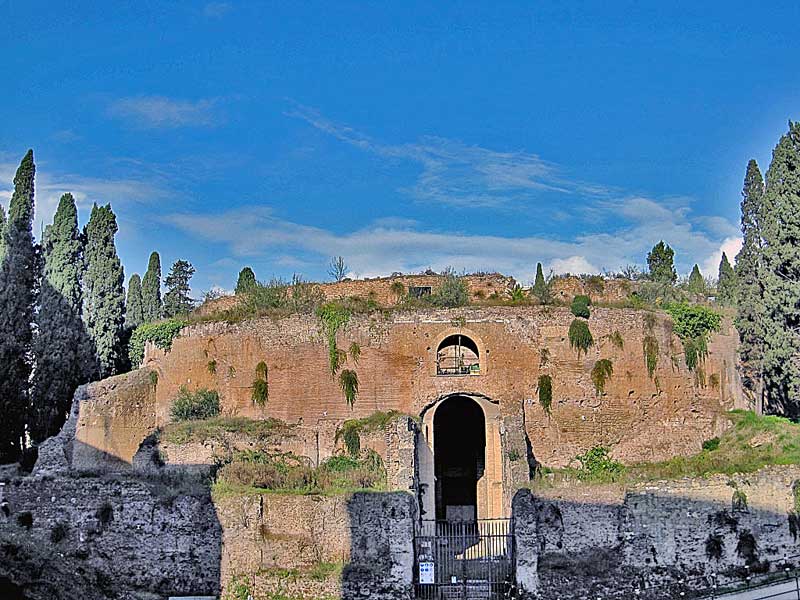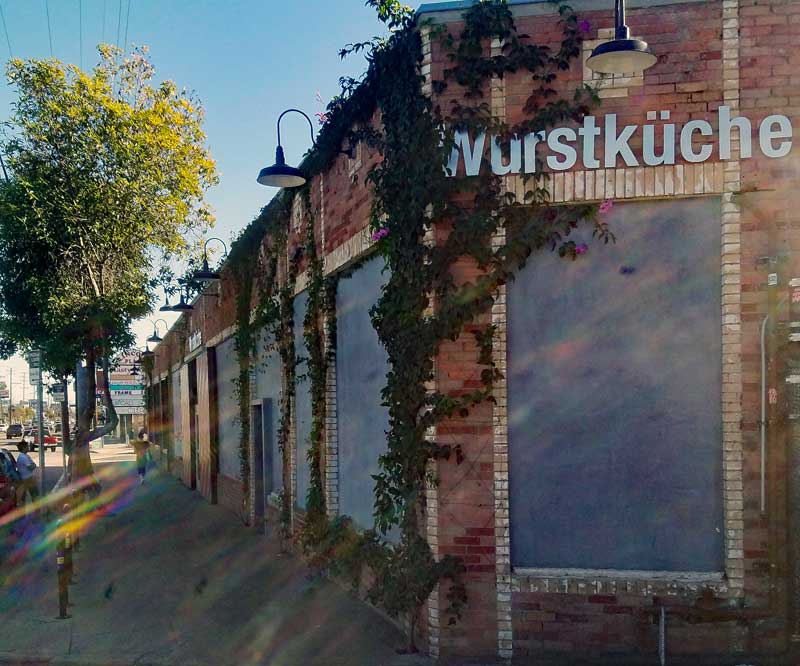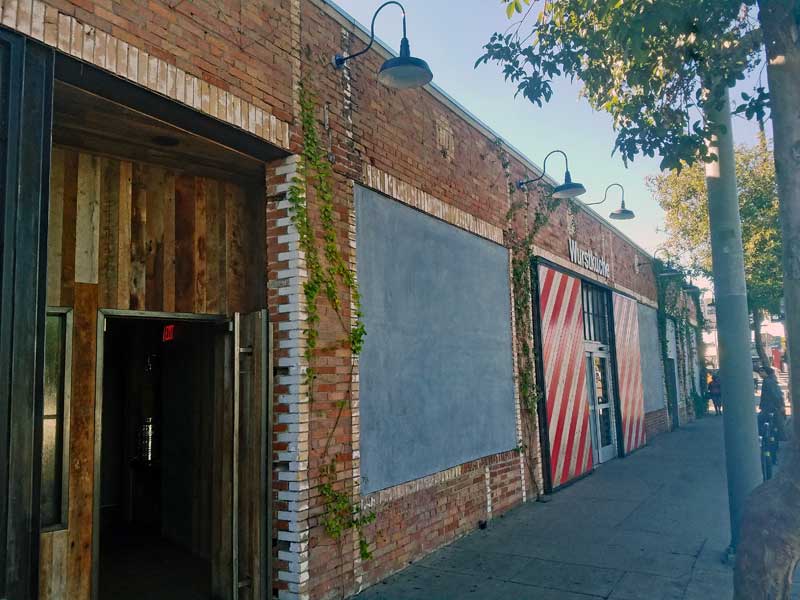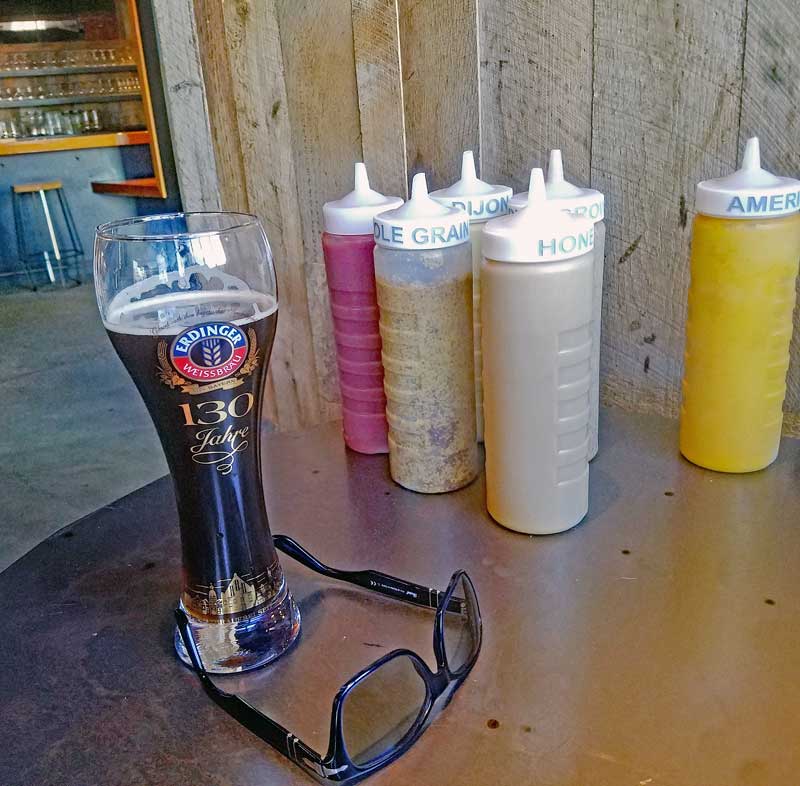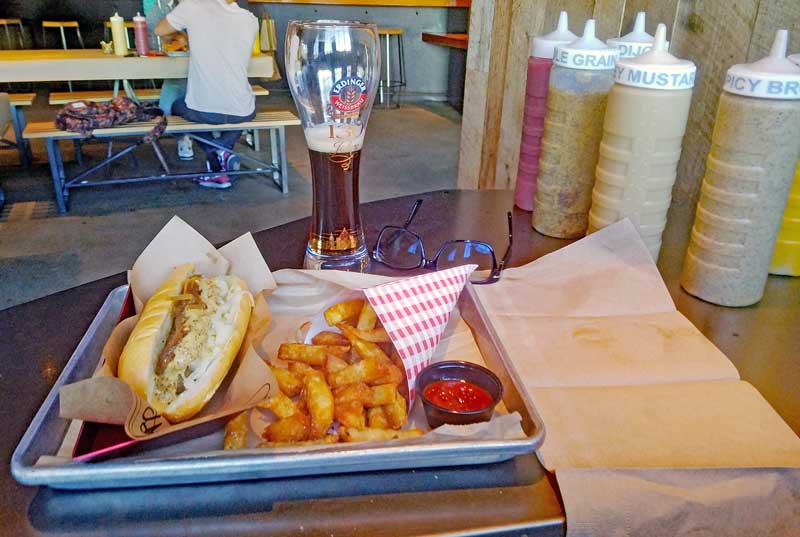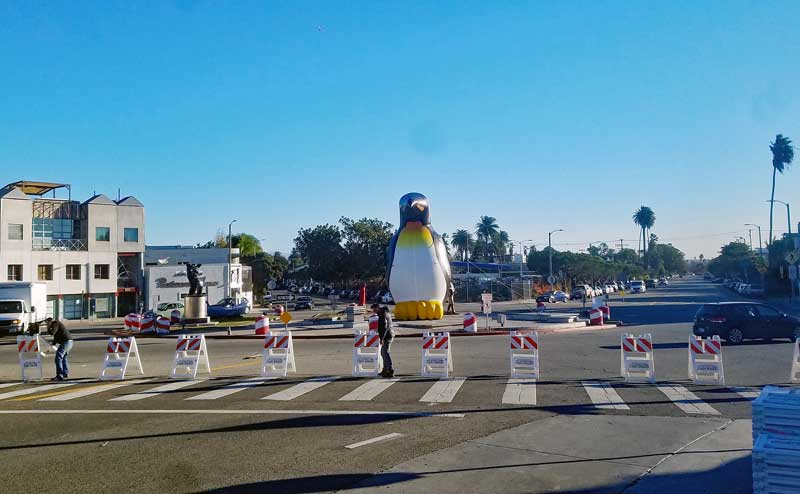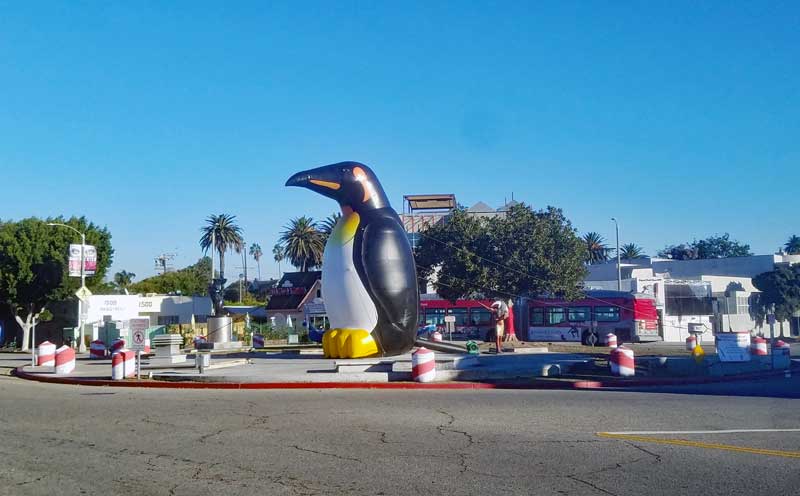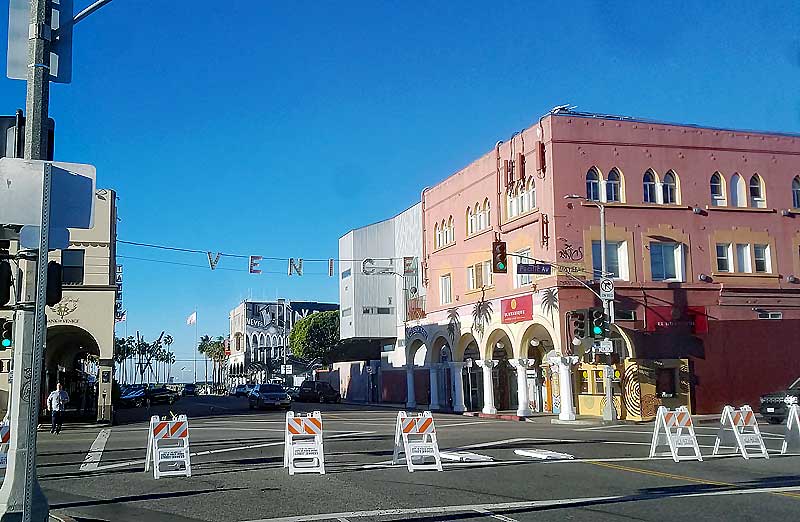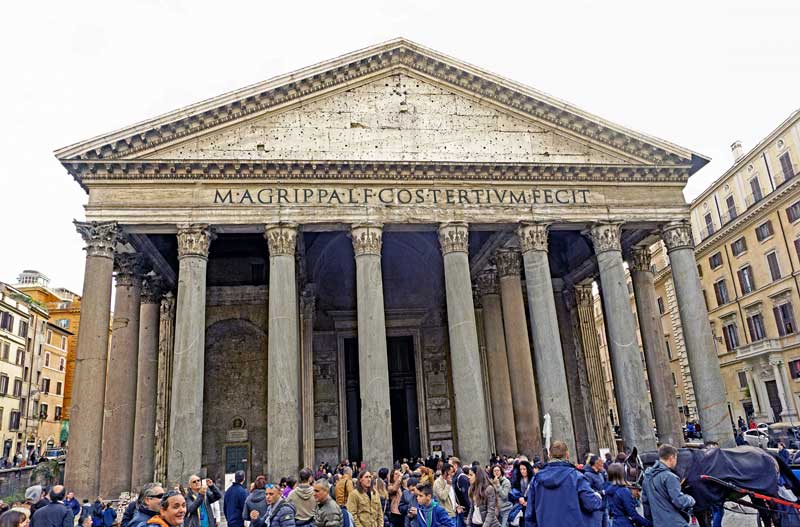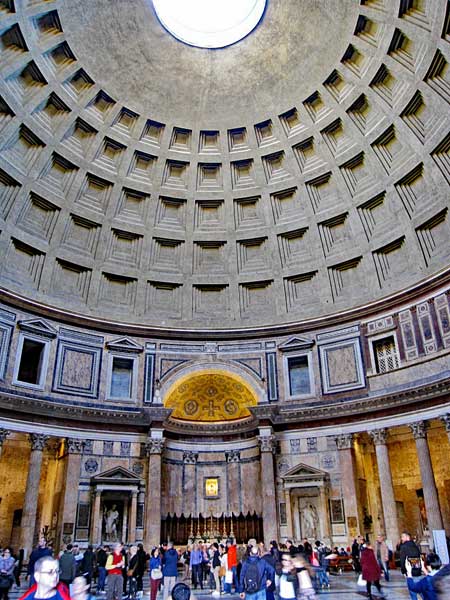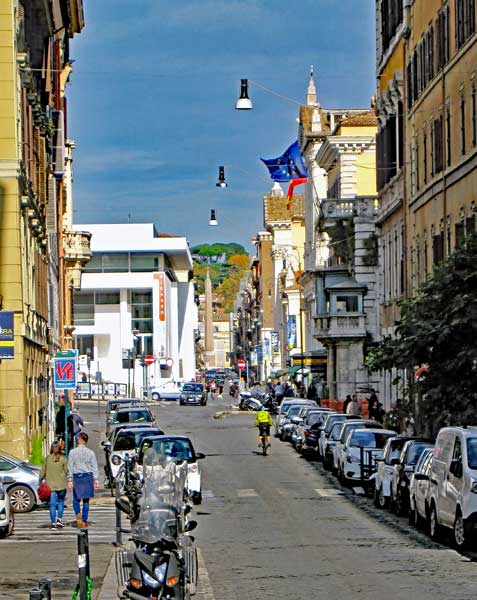
Ara Pacis Augustae or Ara Pacis as it is mostly referred to, is a Roman Temple to the goddess of peace – Pax. It was commissioned by the Roman senate on July 4 13BC in honor of Augustus triumphant return to Rome after his years on campaign in Hispania and Gaul. It was originally erected on the northern outskirts of Rome or actually about a mile outside of what was considered to be part of Rome. It stood in a former floodplain of the Tiber river and was eventually buried in silt. Some fragments were found in the 1500’s and attempts at excavating the temple were made in the early 1900’s but they were not successful because of the instability of the Teatro Olimpia building that had later been built on top of Ara Pacis. It was not until 1937 that the Italian cabinet decided that the excavation should reassume for the 2000 year anniversary of the birth of Augustus (born Gaius Octavius in 63BC died 14AD ). The Temple was excavated and in 1938 Benito Mussolini had a structure built for the Temple next to the Mausoleum of Augustus.

The current home of Ara Pacis was designed by renowned American international architect Richard Meier and built in 2006. It was not without controversy when it was built, but today it seems to be accepted as the great architectural piece that it really is.
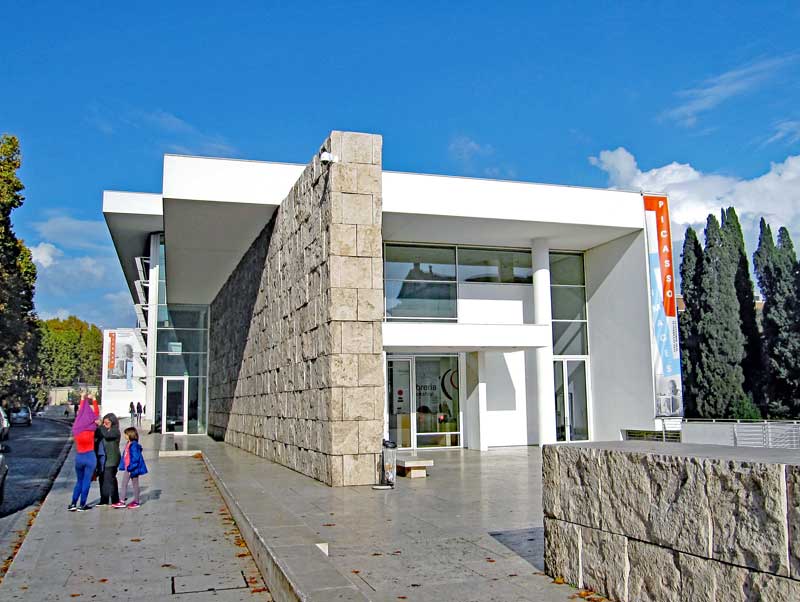
The side of the building that faces the river has a big wall towards a very busy street that runs between the building and the river, it is there to reduce traffic noise from the road.
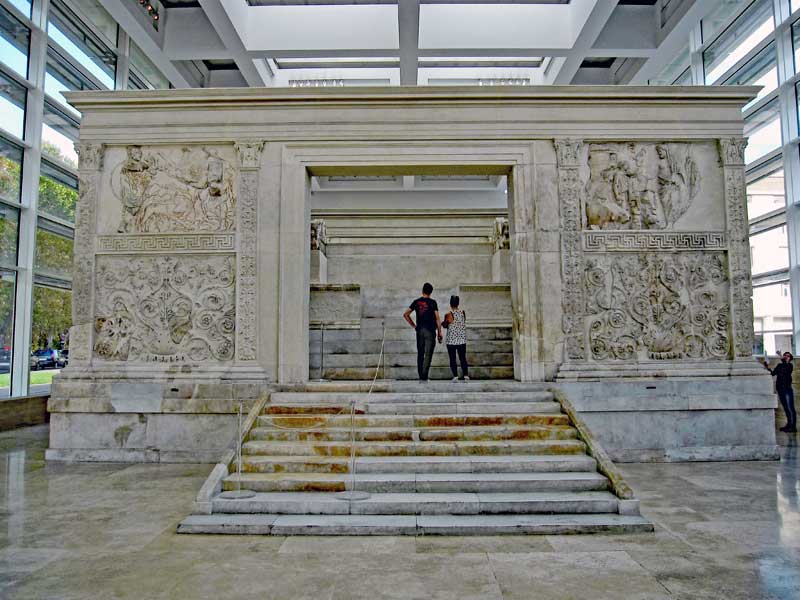
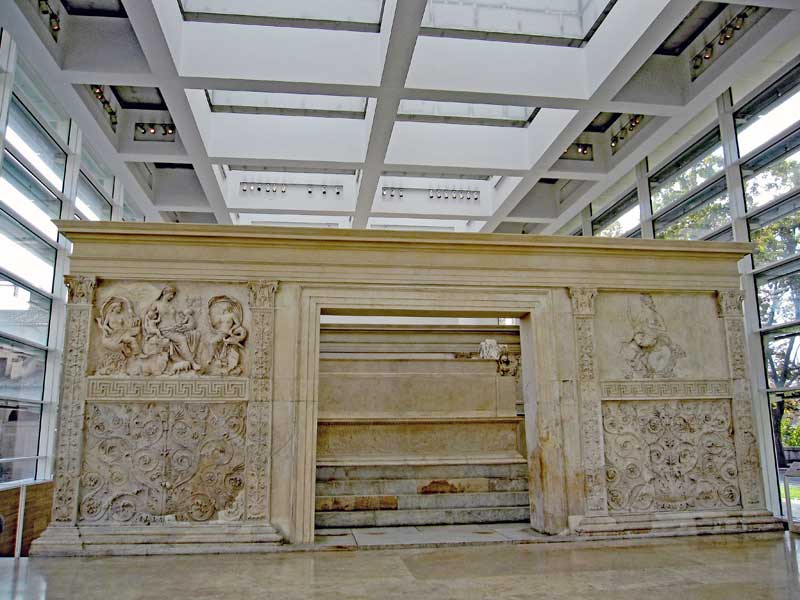

The “Tellus” panel on Ara Pacis depicts Tellus Mater or Terra Mater (Mother Earth) goddess of the earth in Roman mythology.
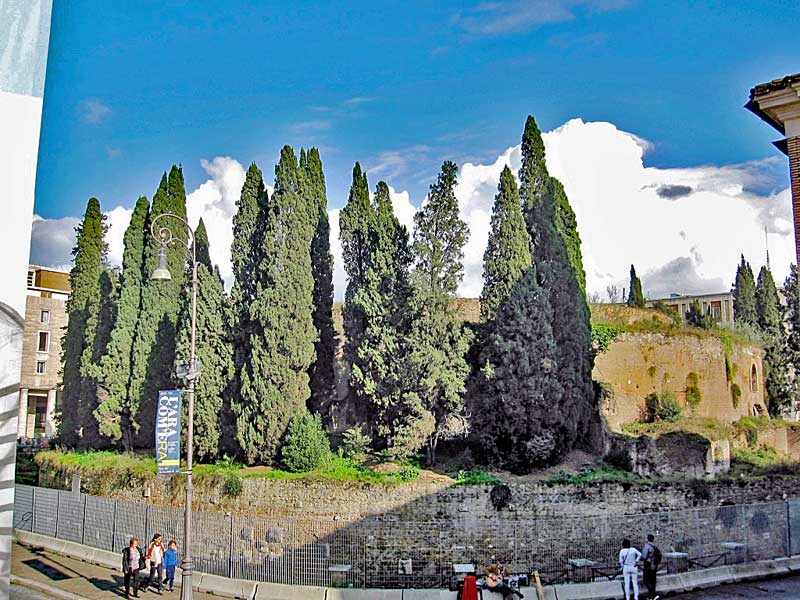
Augustus mausoleum next to the Ara Pacis building is currently (November 2016) fenced off and closed for renovation, though the interior is never open to the public. The Mausoleum was built by Augustus himself in 28BC
